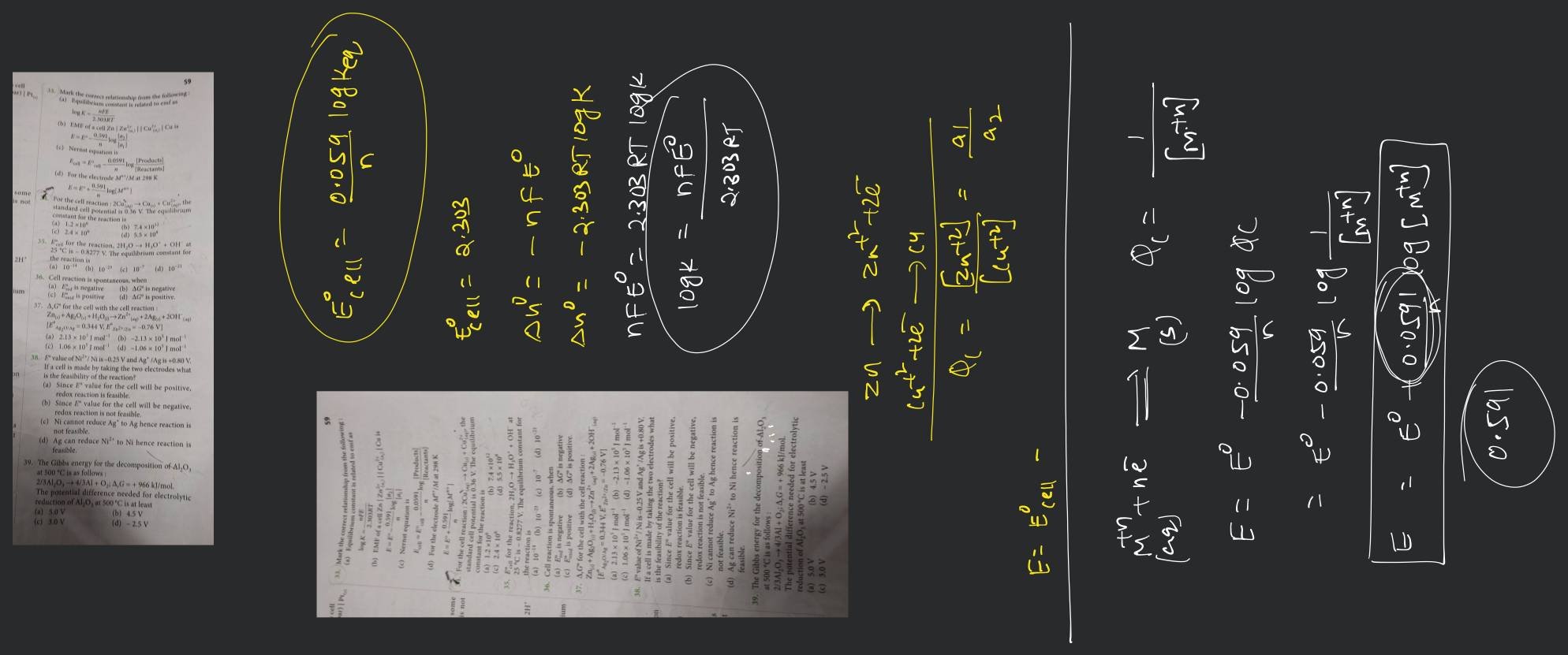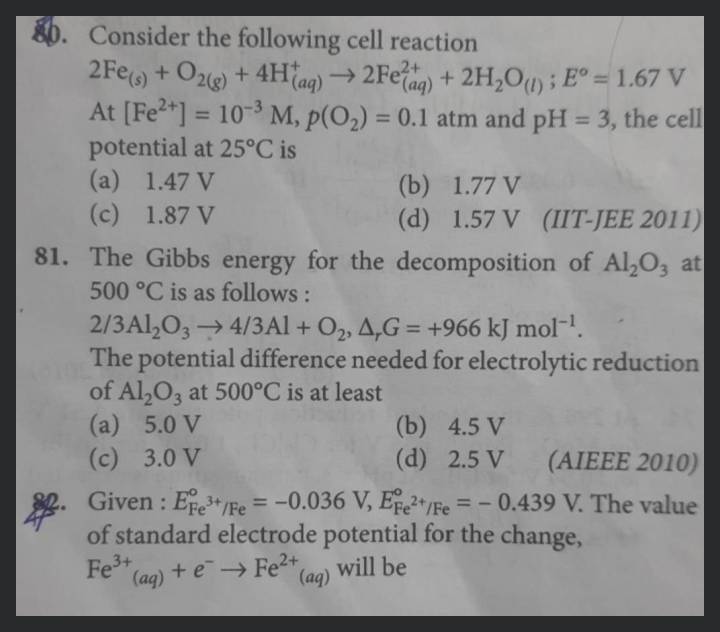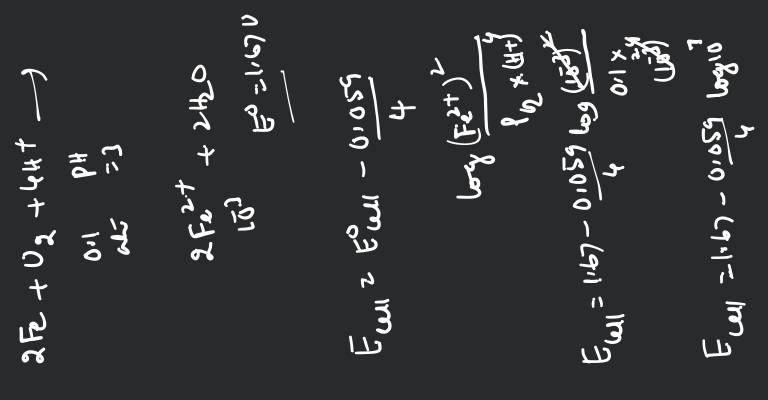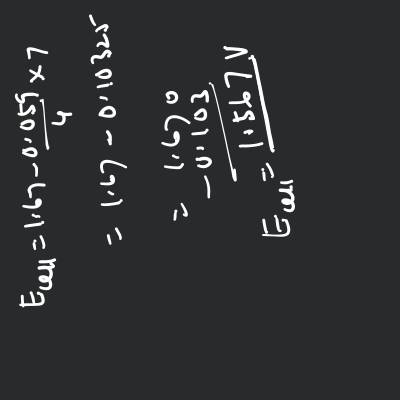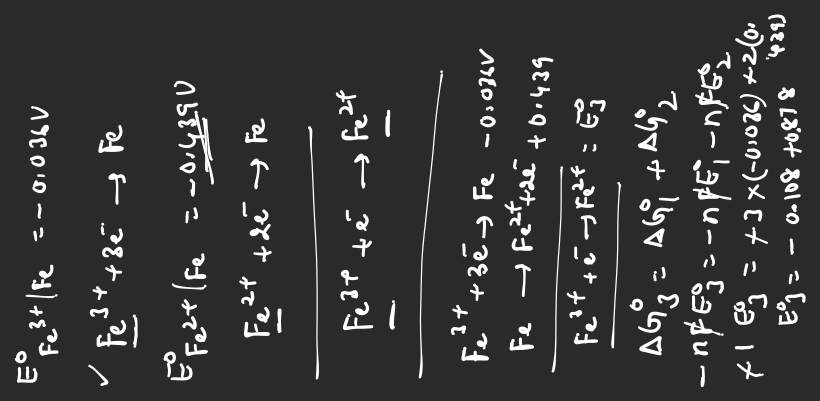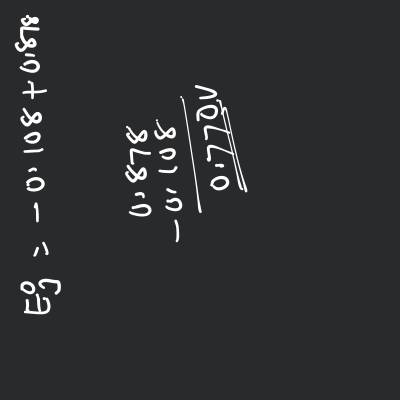Question
Easy
Solving time: 2 mins
The Gibbs energy for the decomposition of at is as follows The potential difference needed for electrolytic reduction of at is at least
Found 3 tutors discussing this question
Discuss this question LIVE
10 mins ago
 Text solution
Text solution Verified
Verified
Thus,
Was this solution helpful?
104
Share
Report
Filo tutor solutions (15)
Learn from their 1-to-1 discussion with Filo tutors.
7 mins
Uploaded on: 4/5/2023
Was this solution helpful?
55
Share
Report
6 mins
Uploaded on: 4/9/2023
Was this solution helpful?
129
Share
Report

One destination to cover all your homework and assignment needs
Learn Practice Revision Succeed

Instant 1:1 help, 24x7
60, 000+ Expert tutors

Textbook solutions
Big idea maths, McGraw-Hill Education etc

Essay review
Get expert feedback on your essay

Schedule classes
High dosage tutoring from Dedicated 3 experts
Questions from JEE Mains 2010 - PYQs
Question 2
Medium
Views: 5,271
Practice questions from Arihant Chemistry JEE Main Chapterwise Solutions (2019-2002) (Arihant)
Question 1
Medium
Views: 6,270
Question 3
Easy
Views: 5,358
Question 4
Easy
Views: 5,196
Practice questions from Electrochemistry in the same exam
Question 1
Medium
Views: 5,714
Question 2
Medium
Views: 5,743
Question 3
Medium
Views: 6,070
Practice more questions from Electrochemistry
Question 1
Hard
Views: 5,812
is
If concentration values given in the above are exchanged,
Question 2
Medium
Views: 6,118
Question 4
Medium
Views: 6,102
Practice questions on similar concepts asked by Filo students
Question 1
Views: 5,085
Question 2
Views: 5,207
Question 4
Views: 5,416


Stuck on the question or explanation?
Connect with our Chemistry tutors online and get step by step solution of this question.
231 students are taking LIVE classes
| Question Text | The Gibbs energy for the decomposition of at is as follows The potential difference needed for electrolytic reduction of at is at least |
| Updated On | Jun 12, 2023 |
| Topic | Electrochemistry |
| Subject | Chemistry |
| Class | Class 12 |
| Answer Type | Text solution:1 Video solution: 15 |
| Upvotes | 1721 |
| Avg. Video Duration | 6 min |



